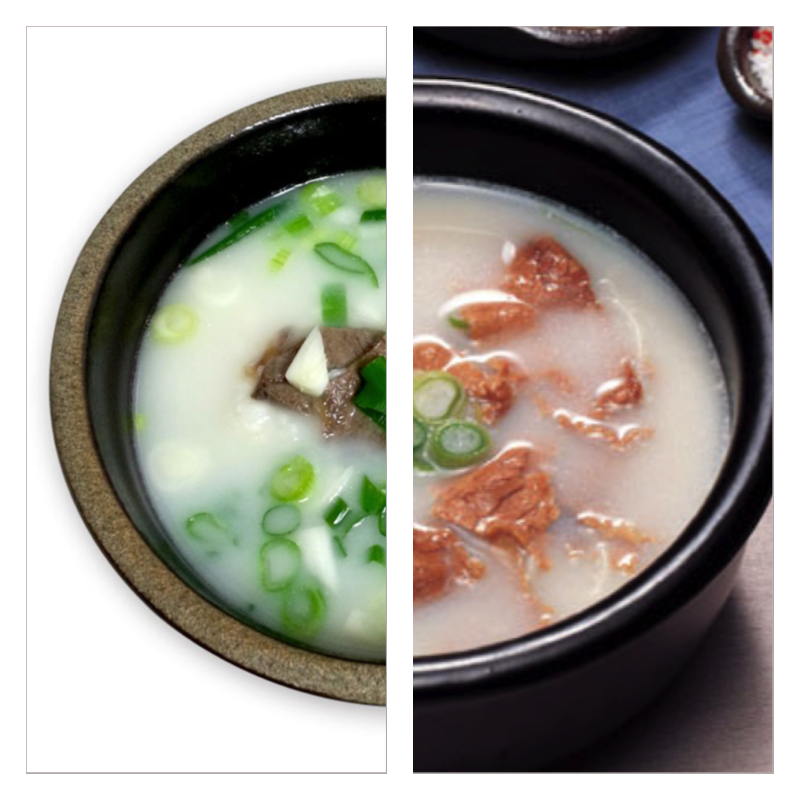Know Which Is Which: Seollangtang and Gomtang
Hot bowls of guk or tang, otherwise known as soup, can never be left out from Korea’s winter recipes, especially in this cool weather. Although there is an extensive range of soup varieties in this paradise for soup-lovers, there are not that many choices you can make if you seek something not red or spicy. For Koreans, seolleongtang (설렁탕) and gomtang (곰탕) will be at the top of the list of milky soups with their rich flavors. But it is shameful to know that not even most Koreans can fully explain the difference between the two white soups. Therefore, I gift you here with the revelation of the truth behind distinguishing these two beef soups enjoyed by many.
Before we get down to the real tang business, there is an interesting fact to learn about beef in Korea. There is no other country besides Korea that classifies beef into 125 parts. As per tradition, Koreans never let any part of the animal go to waste. The ingredients are by far the biggest difference between seolleongtang and gomtang. Both soups require the ingredients to be simmered for a very long time (sometimes more than half a day); however, the ingredients make the colors different. Kneecap bones or leg and foot bones are simmered to make a deep, rich broth in milky white seolleongtang. On the other hand, traditional gomtang should be made using beef ribs, brisket, flank, tripe, and other innards (even tailbones) slowly simmered at a low heat. The more varieties of beef parts put into the pot for simmering, the richer the broth. In brief, seolleongtang is more bone-dense and gomtang is more meat-based.

The seasonings of the two dishes are another difference between them. During the broth simmering for gomtang, soy sauce is used as seasoning; however, seolleongtang uses pure, simmered broth and needs to be seasoned with salt and scallions according to the consumer’s preference. Furthermore, gomtang is expected to be served with few, relatively thick, chunks of meat simmered with the broth. On the other hand, seolleongtang is served with only a few thin slices of meat surrounding the bones, or beef parts are prepared separately as a garnish. This may be the reason why seolleongtang has plain noodles inside but gomtang does not.

Side dishes like kkakdugi (cubed radish kimchi), kimchi, and hot chili pepper are served alongside these soups for specific reasons. They not only add savor to the soup, but also balance the plain flavor with spiciness, eliminating the fatty flavor of the soup. It is strongly recommended by the locals to add the juice of kkakdugi into seolleongtang for a fresher taste. As with all other Korean dishes, these two soups may be served differently depending on the region. Gwangju is fortunate enough to have our neighboring city, Naju, which is famous for its gomtang variation known as Naju Gomtang. Its distinct flavor and presentation attracts Koreans from all over the peninsula, forming a unique street of gomtang restaurants that draws crowds of diners and tourists on weekends.
Try to distinguish between these two soups this winter. I hope this article has educated you sufficiently to guide you in choosing the soup that is just right for you! Bon Appetit!





